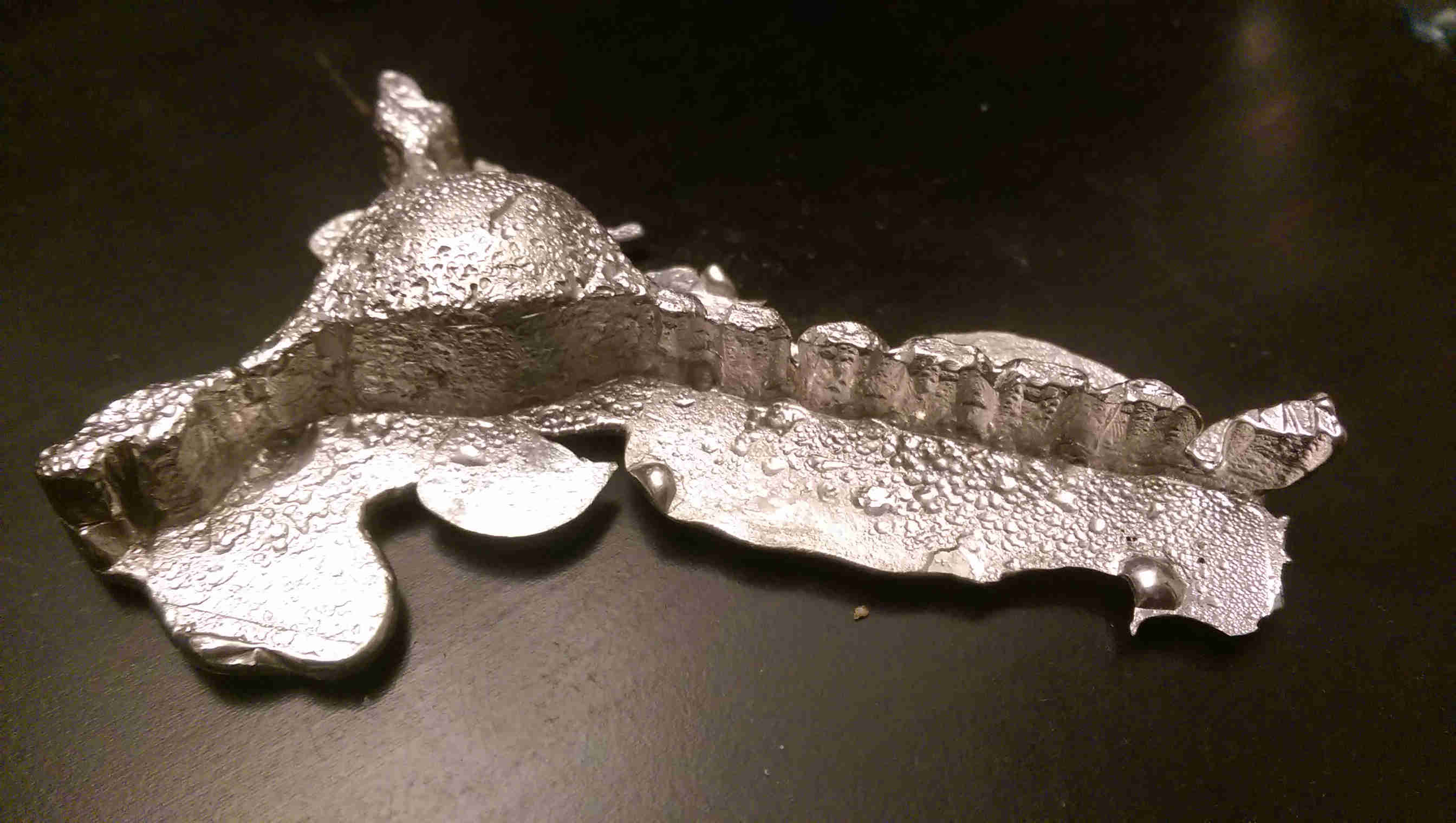week 6: molding and casting
Since I am interested in synthetic biology (especially in the context of neuroscience), I thought it would be amusing to cast a mold of a neuron (a brain would have also been amusing, but seemed less tractable to model ab inito; in lieu of access to MRI data from which to construct a model, I opted for a neuron).

pyramidal neurons ('e', and neighbors) as sketched by ramon y cajal
There are loads of different neuronal types; I chose to base my toy model on a pyramidal neuron (the above sketch includes examples from the most famous and pioneering neuroanatomist, Ramon y Cajal). Since an actual real neuron has very fine features relative to the size of its soma, I made a toy model with exaggerated features (specifically, a large, myelinated axon and an oversimplified dendritic tree with enlarged spines). I designed the model in antimony, and then exported a heightmap for milling the wax positive.

stl of neuron model
The workflow I followed went as followed: 1. Mill a wax positive from the antimony heightmap on the roland desktop MDX-20 milling machine (using first a 1/8 inch rough cut and then a 1/8 inch fine cut). 2. Cast an OOMOO mold to create a negative (2x for a full 3D structure) 3. In the OOMOO mold, cast hydrostone / bismuth+tin alloy / etc. to create a final product (and then repeat 3 as desired for more).

fab modules rendering of rough cut tool path
One lesson from the week was a simple if obvious one: your modling as casting is only as good as your initial positive. The modella 1/8 inch endmill cut had a hard time definiting the smaller features in my model (they barely got the axon topology, and the dendrite morphology was totally lost). I also notice (after the wax positive had been milled) some idiosynchrosies of the antimony export: I had created a symmetric model, and exported a height map assuming it would export the maximum Z coordinate at each point. Instead, it definited the offset from the *minimum* point in my image (here the bottom of the 'dip' in the soma. This means that effectively my model was strechted in Z. Given unlimitted time, I could have recut, but since it was mostly accurate enough, I opted to press on
Another note: to save time, I set the depth slightly shallower than the actual depth of my block (I set zmin to -15 mm) and increased the cut depth to 1.5 mm to speed up the milling process, given the high demand for mill time this week. Overall the job predicted and did indeed run for ~ 65 min.

rough cutting the wax positive

axon of the mold after the fine cut (i went back with an exacto knife to add the divit topology that the fine cut removed)

smoothing the finish with a heat gun (after 1st mold was poured)
I then poured two OOMOO molds using my wax positives (note I also added 4 dowel-rod shaped pegs for registration; it turns out that vacuuming the dust from the modella sucked up one of the pegs, leaving me with 3).

poured oomoo

molds

oomoo molds held together, or sushi?
I attempted to cast the mold using hydrostone (100 g hs, 32 g water) and pouring down the axon length vertically (as in the sushi-looking image). I played around with lots of conditions, but each time ran into an issue in which the mold appeared fully poured, but actually was stuck in the axon. Resulting in a final structure with a large gap below where the hydrostone got caught in the narrow axon. In retrospect, this geometry was probably ill-suited to mold pourint.

2-part mold failure
Since the molds were warped by the antimony heightmap zeroing in any caseto be stretched in z, and because my geometry was struggling with the 2-part casting, I decided to cast single-mold neurons instead. Here I again had some issues with the axon; it was very brittle, and easy snapped while liberating the piece from the mold. But this was easy fixed with superglue ex-post facto.
Finally, I did a bismuth-tin alloy cast. Because our funnel has mysteriously disappeared, it was somewhat challenging to get an even pour in an open mold. But in the end, the wild base layer that the overflow added looked kind of cool (and quite similar to the kind of morphology you might see in e.g. a HEK cell in a tissue culture dish).




